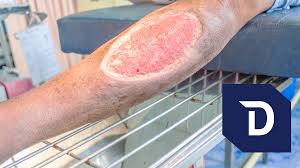While joint pain often takes center stage in discussions about mobility and injury, proper wound care plays a key role in preventing complications that can worsen discomfort or delay healing. Whether caused by surgery, trauma, or underlying conditions, wounds near joints require careful attention to avoid infection and preserve joint function. Let’s explore key steps for preventing infection when caring for a wound.
Why Clean Wound Care Matters
Wounds located near joints require extra attention because these areas face more movement and stress. Joints like knees, elbows, and fingers bend and stretch, which can make minor wounds open up further. This exposure makes it simpler for dirt and germs to enter, increasing the risk of infection.
Also, joints house core tissues, like tendons and ligaments, that help with movement. Germs that reach these tissues may trigger complications, such as swelling, reduced movement, and joint pain. Keeping the wound clean not only protects against infection but also supports the surrounding joint structures. A clean wound makes sure your body focuses fully on healing instead of fighting off bacteria.
How to Prevent Wound Infection
Taking the right steps immediately after an injury reduces infection risks. Here’s what to do:
- Wash your hands. Start by cleaning your hands with soap and water. Germs on unwashed hands may transfer to the wound.
- Clean the wound. Use running water to wash away dirt and debris. Mild soap helps remove bacteria without causing more irritation.
- Apply an antiseptic. Cover the area with an antiseptic solution to protect against bacteria. Avoid products that sting excessively, as they are harsher on the skin.
- Cover the wound. Use a clean bandage to keep the area protected. Adhesive bandages are suitable for small cuts, while gauze is more effective for larger wounds.
- Change the dressing regularly. Replace the bandage daily or as soon as it becomes wet or dirty. This removes built-up bacteria and keeps the wound dry.
Also, avoid touching the wound frequently. External contact introduces dirt and germs, which can interrupt the healing process.
Signs of Infection and Joint Complications
Not all infections happen immediately. It’s helpful to know the warning signs. Signs of infection include redness, swelling, warmth around the wound, and pus. If the area becomes painful or emits an unusual smell, the wound may be infected.
Pay close attention when wounds are near joints. Swelling or stiffness in nearby joints could exacerbate joint pain and indicate a deeper problem. Difficulty bending or straightening the joint, or a wound that worsens instead of improving, may signal that the body needs more support. Addressing these signs early can help prevent further tissue damage. If you notice any concerning changes, seek advice.
Long-Term Protection
Good long-term care is fundamental for both wound recovery and joint support. After the wound closes, the surrounding skin and tissues still require care. Moisturize the area with a gentle lotion to prevent it from drying out, as cracked skin is more vulnerable to reinjury.
Adding light exercises, such as stretching, recommended for joint healing, helps maintain flexibility and may ease joint pain. Muscle and tissue movement encourage oxygen-rich blood flow to the area, which may speed up recovery. Just make sure to avoid overusing the joint until it feels fully healed.
Book a Joint Pain Evaluation Today
Joints and wounds require coordinated care to maintain health and function over time. If a wound near a joint doesn’t heal or leads to stiffness or persistent joint pain, contacting a specialist is helpful. A thorough evaluation identifies any underlying joint problems and provides guidance on treatment or therapy as needed. For persistent joint pain, book a joint pain evaluation today by contacting a pain specialist near you.
- Pedrovazpaulo Wealth Investment: Unlocking Financial Freedom Through Innovative Strategies
- EO Pis: A Comprehensive Guide to Environmental Objectives and Performance Indicators
- Premiumindo69: The Future of Digital Entertainment
- Macadamia Nut Milk: Health Benefits, Recipes, and Why It’s the Perfect Dairy-Free Alternative
- Hentquz: The Future of Productivity and Collaboration


